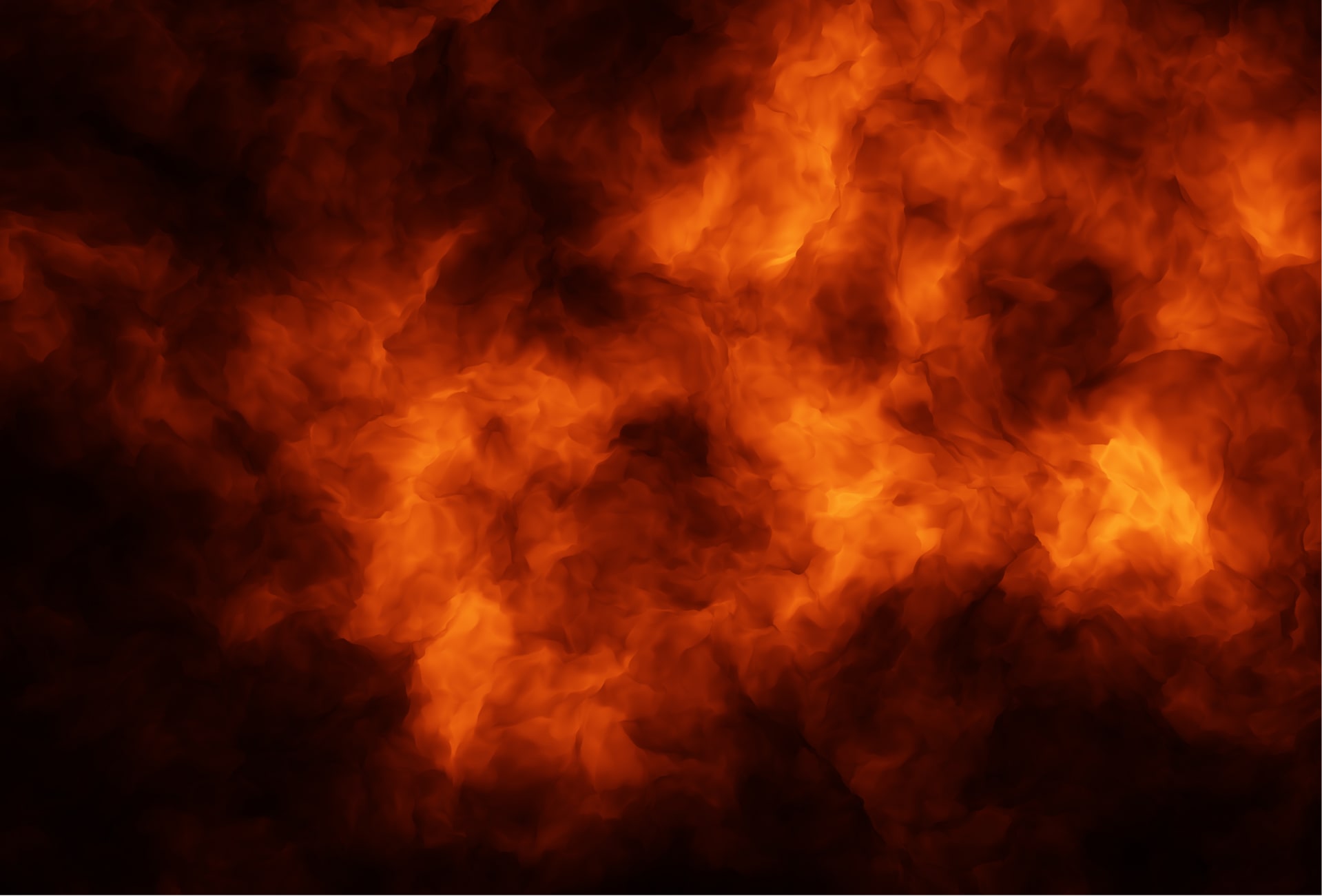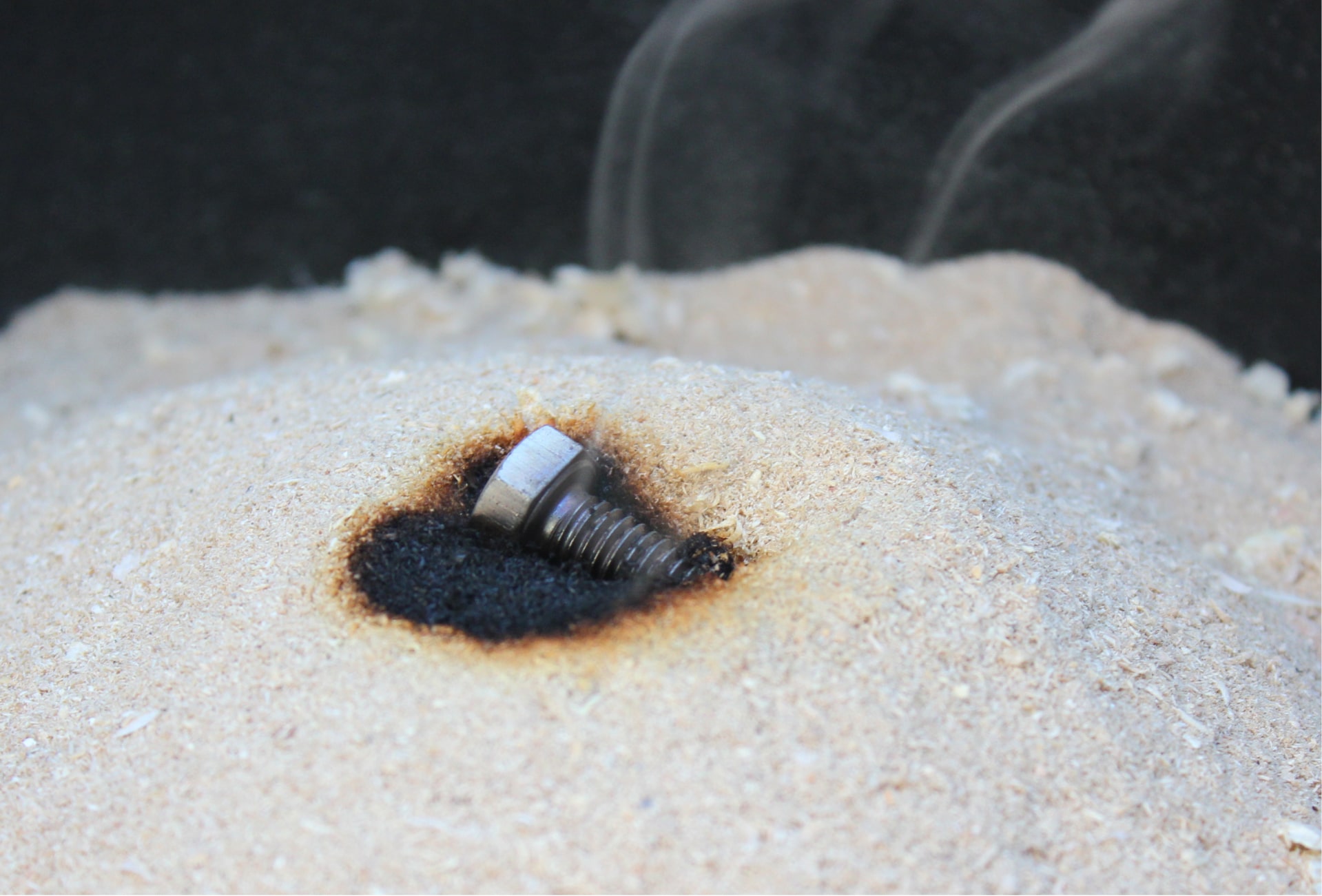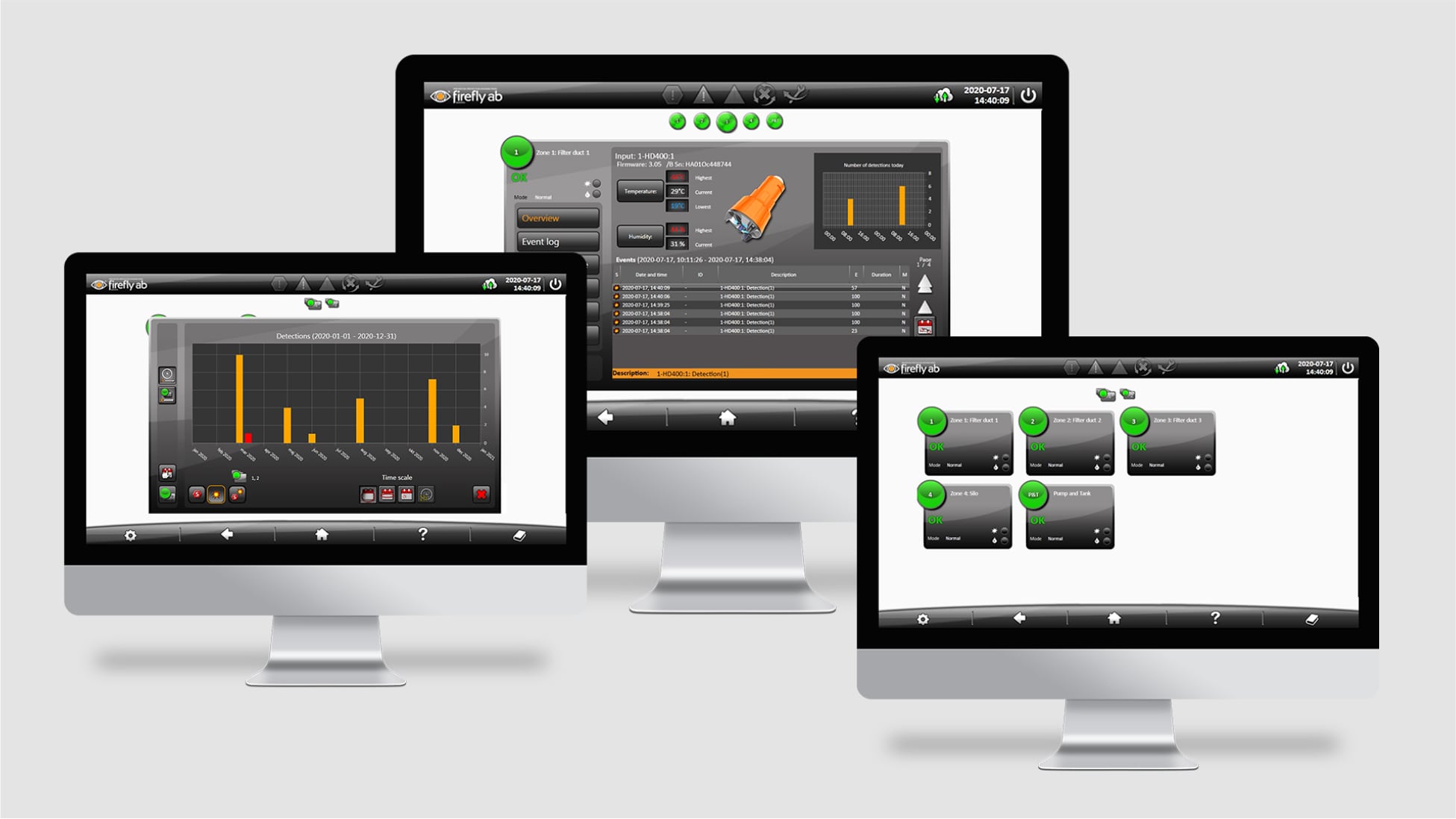Detect hot particles before they glow
Seeing black particles in the dark
Firefly’s spark detection system uses TrueIR™ detectors and advanced signal processing to detect hot particles in the process flow, even if they are not glowing. Sparks visible to the human eye have a temperature of at least 700°C (1292°F). But many materials, such as wood, can catch fire at much lower temperature, around 400°C (752°F). By the time sparks can be seen, it may already be too late.
Spark detector – Insensitive to daylight
The Firefly TrueDetect™ technology is insensitive to daylight and enables detection down to the minimum ignition temperature (MIT).
Firefly’s TrueIR™ detectors only operate in the infrared spectrum. Conventional spark detectors, by contrast, are based on silicone photodiodes that detect visible light and near-infrared radiation, i.e. temperatures from 650°C (1202°F) or higher.
All Firefly TrueIR™ detectors are equipped with patented Multi-Checkpoint™ technology to ensure rapid and accurate detection. Using a derivative measuring principle, Firefly detectors can identify hazardous particles traveling at speeds up to 50 meters per second.
Minimum ignition temperature and energy level
| MATERIAL | CLOUD | LAYER | MIN. CLOUD IGNITION ENERGY, J |
|---|---|---|---|
| WOOD | 470 °C / 878 °F | 260 °C / 500 °F | 0,04 |
| WHEAT FLOUR | 440 °C / 824 °F | 440 °C / 824 °F | 0,06 |
| CELLULOSE | 480 °C / 896 °F | 270 °C / 518 °F | 0,08 |
| SUGAR | 370 °C / 698 °F | 400 °C / 608 °F | 0,03 |
| COCOA | 510 °C / 950 °F | 240 °C / 464 °F | 0,10 |
| ALUMINUM | 610 °C / 1130 °F | 326 °C / 619 °F | 0,01 |
| COFFEE | 720 °C / 1328 °F | 270 °C / 518 °F | 0,16 |
Source: NFPA (National Fire Protection Association)


